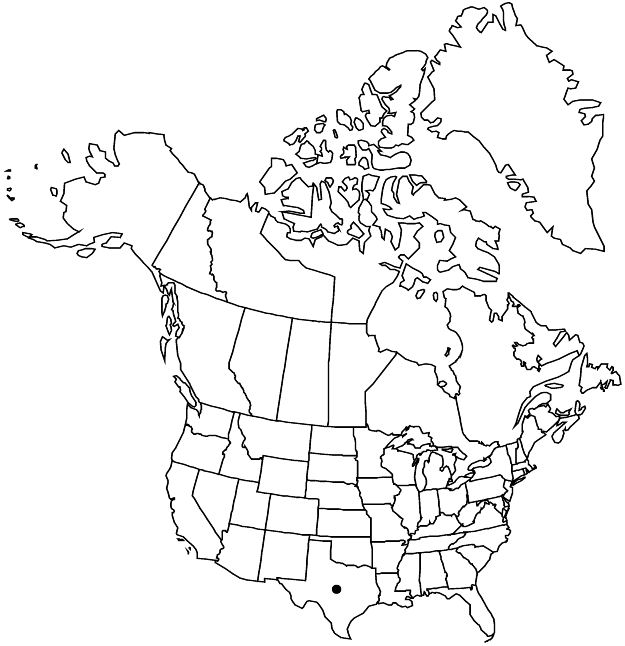Difference between revisions of "Euphorbia chaetocalyx var. triligulata"
Wrightia 5: 139. 1975.
FNA>Volume Importer |
imported>Volume Importer |
||
| Line 61: | Line 61: | ||
|publication year=1975 | |publication year=1975 | ||
|special status=Conservation concern | |special status=Conservation concern | ||
| − | |source xml=https:// | + | |source xml=https://bibilujan@bitbucket.org/aafc-mbb/fna-data-curation.git/src/bb6b7e3a7de7d3b7888a1ad48c7fd8f5c722d8d6/coarse_grained_fna_xml/V12/V12_769.xml |
|genus=Euphorbia | |genus=Euphorbia | ||
|section=Euphorbia sect. Anisophyllum | |section=Euphorbia sect. Anisophyllum | ||
Revision as of 20:11, 27 May 2020
Leaf blades narrowly-ovate to linear-lanceolate, 3–11 × 0.8–3 mm. Involucral gland appendages straplike, divided into 3–5 linear segments, each 0.8–1.1 × 0.1 mm.
Phenology: Flowering and fruiting early summer–fall.
Habitat: Canyon walls, crevices in boulders.
Elevation: 600–900 m.
Distribution

Tex., Mexico (Coahuila).
Discussion
Variety triligulata was described from the cliffs of Boquillas Canyon, on both sides of the Rio Grande in Texas and adjacent Coahuila, Mexico. The variety has elongate involucral gland appendages that are divided into three to five linear, straplike segments; it appears to represent a distinctive, localized population within the overall distribution of Euphorbia chaetocalyx. More generally, populations of E. chaetocalyx from elsewhere in northern Coahuila, Mexico, have similarly shaped involucral gland appendages and may represent additional populations of var. triligulata.
Selected References
None.